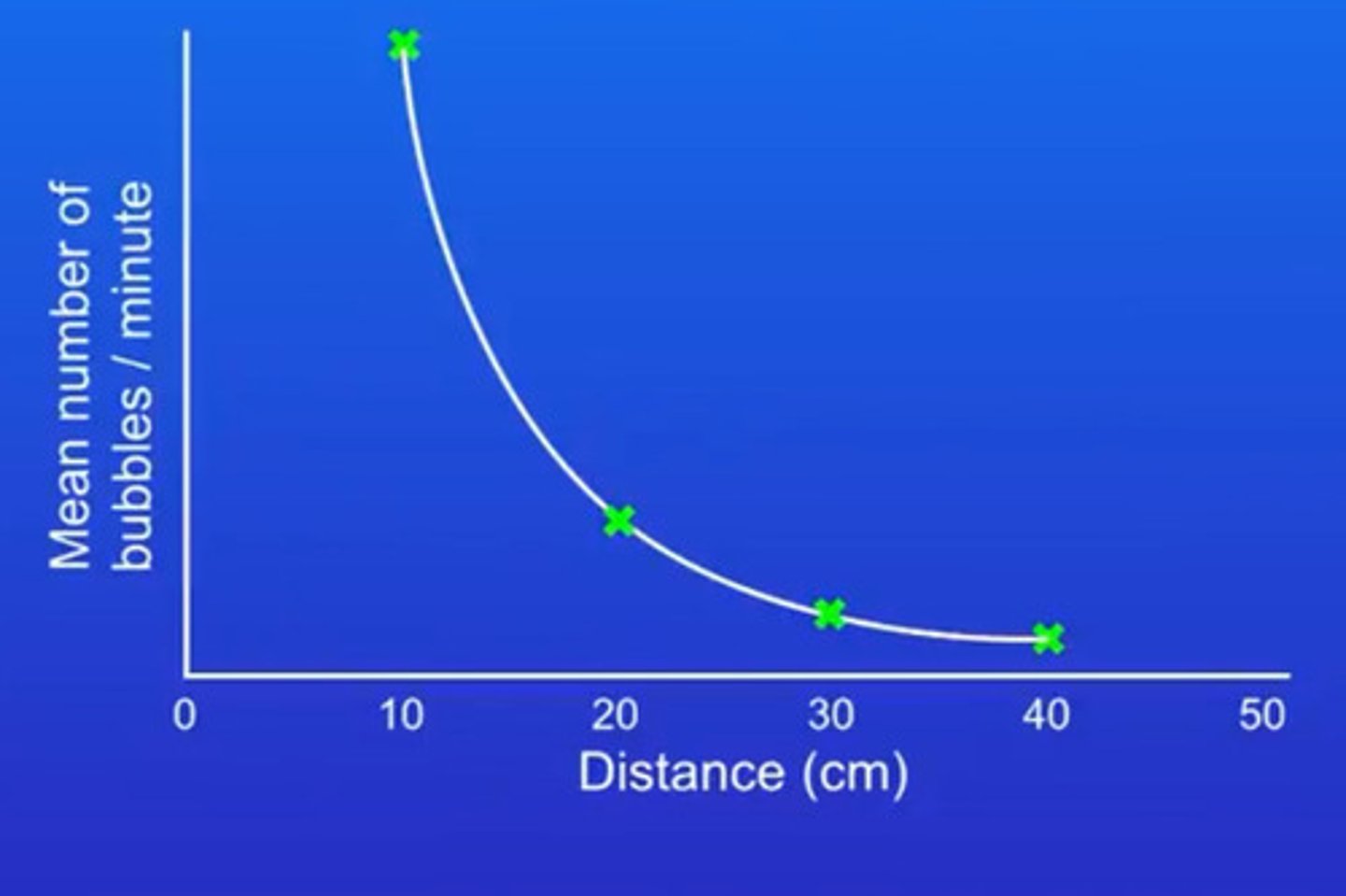Biology B4 - required photosynthesis practical
1/16
There's no tags or description
Looks like no tags are added yet.
Name | Mastery | Learn | Test | Matching | Spaced |
|---|
No study sessions yet.
17 Terms
explain the 1st step of the photosynthesis practical
1. boiling tube and place it 10cm away from an LED light source
why do we use an LED light source
because they don't release too much heat, too much would change the temperature of the experiment
if an normal light bulb is used what do you have to do
place a beaker of water between the bulb and tube to absorb the heat produced by the bulb
2nd step?
fill the tube with sodium hydrogen carbonate solution
why do we use sodium carbonate solution
releases the carbon dioxide needed for photosynthesis
step 3
put a piece of pondweed into the boiling tube with the cut end at the top
step 4
leave for 5 minutes to acclimatise to the conditions in the boiling tube
what should start to happen
bubbles of gas being produced from the cut end of the pondweed. this gas is oxygen being released by photosynthesis
step 5
start a stop watch and count the number of bubbles produced in one minute
step 6
repeat 2 more times and calculate the mean number of bubbles produced in one minute
step 7
repeat experiment all over again from 20cm, then 30cm, 40cm,
what are the two main problems with this practical
1. bubbles can be too fast to count accurately
2.bubbles are not always the same size - a large bubble would count as a small bubble
how do we solve this problem
measure the volume of oxygen produced instead of counting bubbles
explain the steps of this experiment
1. place the pondweed under a funnel & catch the bubbles in a measuring cylinder
2. use the measuring cylinder to measure the volume of oxygen produced
if we plot the mean number of bubbles per minute or volume of oxygen per minute against the distance from the lamp to the pondweed, what does the graph look like - explain the graph too.
if we double the distance then number of bubbles per minute falls by a factor of 4.

what do scientists call this
the inverse square law
why does this happen
if we double the distance, the light intensity falls by 4 times, because we need light for photosynthesis this causes te number of bubbles produced per min to fall 4 times as well